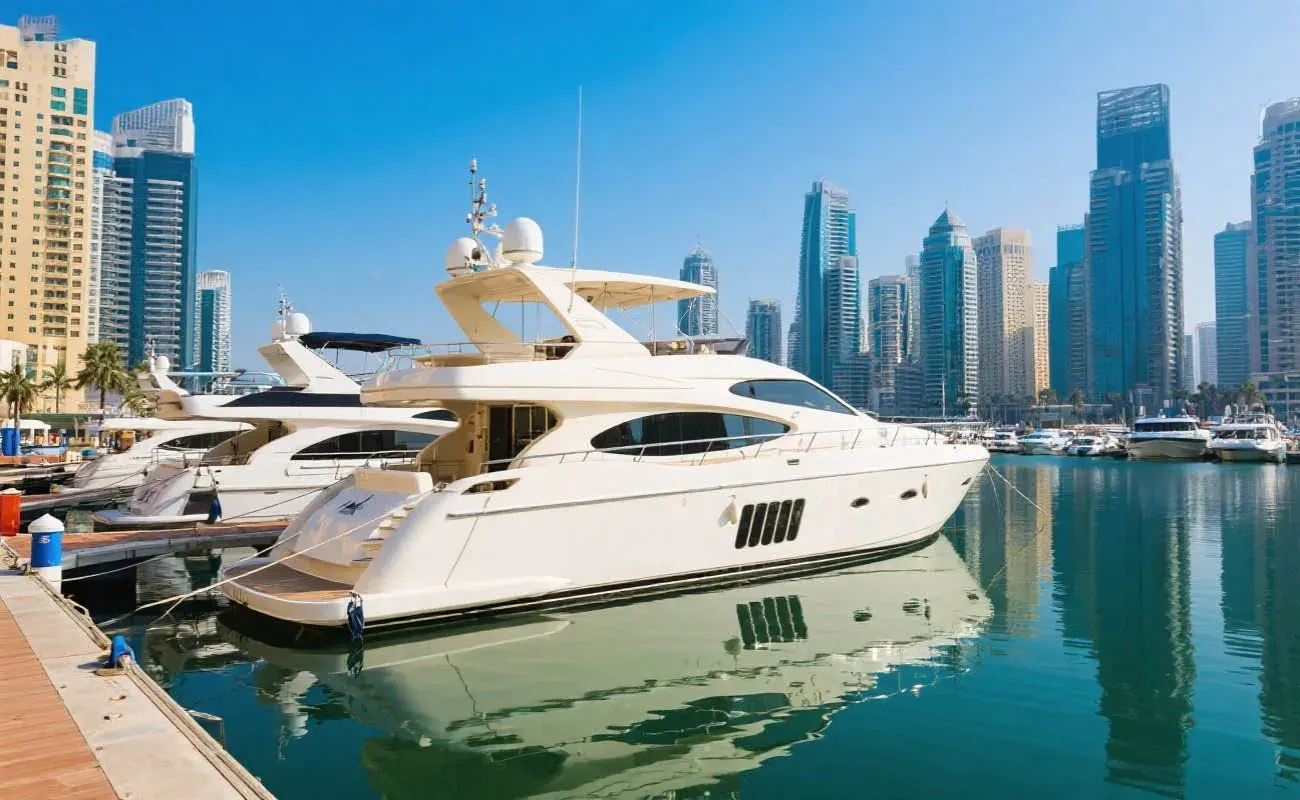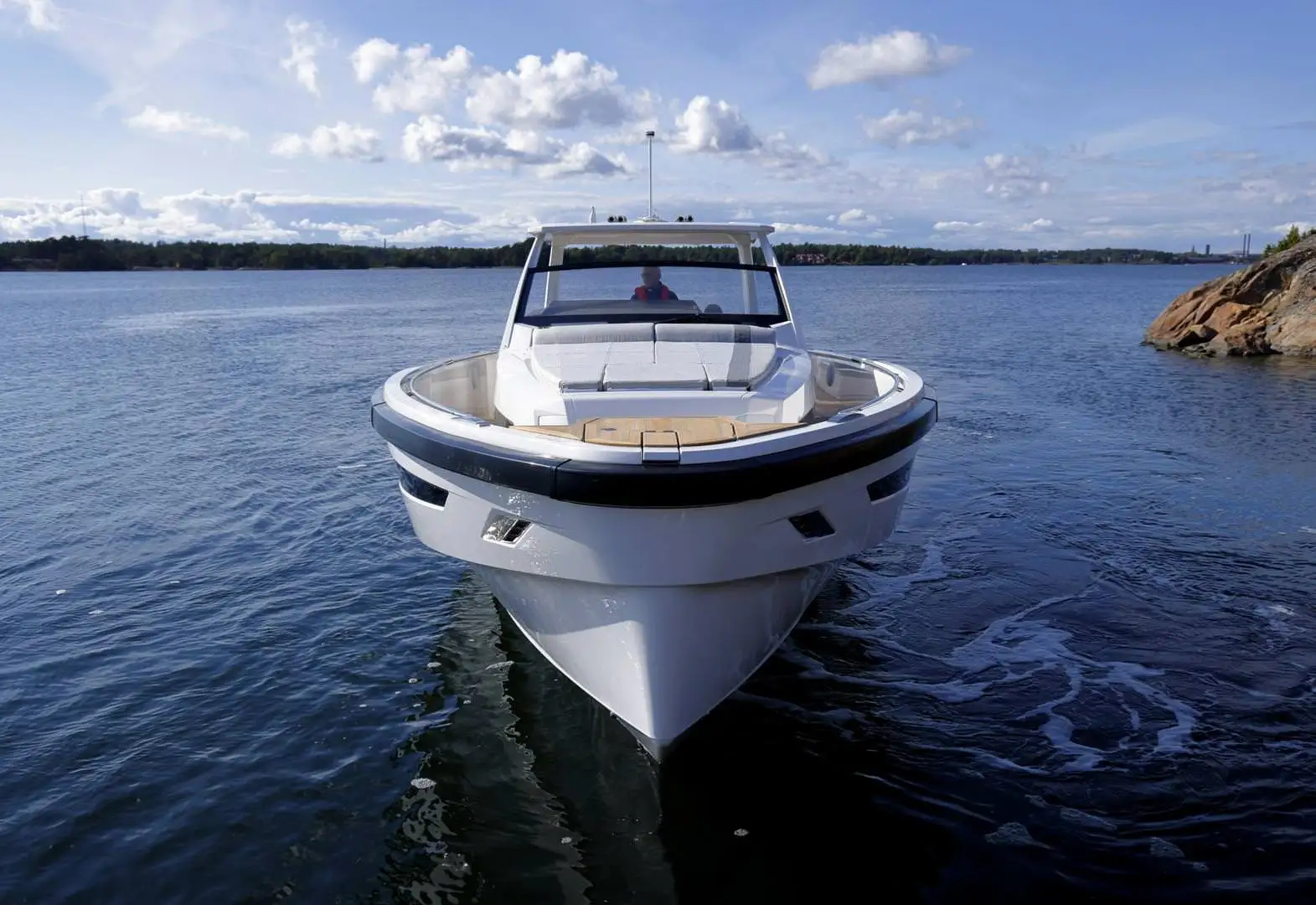Buying a yacht is a lifelong dream for many. The allure of setting sail at sunset, the feeling of freedom, the promise of new adventures, and the idea of living on the open water—it's all incredibly compelling. As a yacht broker with over eight years of experience, I've guided countless clients through this thrilling yet demanding journey. But many first-time buyers don't realize that yacht ownership isn't just about finding the perfect vessel—it's about making a wise decision that ensures years of enjoyment ahead.
The excitement is real, and so are the challenges. This decision carries significant weight—involving major financial investment, lifestyle changes, and the responsibility of maintaining a vessel that will carry you to distant destinations. The good news is that avoiding common pitfalls can ensure smooth sailing ahead.
Table of Contents
Mistake 1: Skipping Pre-Purchase Research
Mistake 2: Neglecting the Yacht Survey
Mistake 3: Not Budgeting for Ongoing Costs
Mistake 4: Choosing the Wrong Size
Mistake 5: Ignoring Future Needs
Mistake 6: Underestimating the Importance of a Yacht Inspection
Mistake 7: Skipping the Sea Trial
Mistake 8: Overlooking the Importance of a Yacht's History

Mistake 1: Skipping Pre-Purchase Research
When I first started in yacht brokerage, I noticed a common trait among new buyers: excitement often outweighed preparation. They were eager to find the perfect yacht but hadn't done their homework. Whether it's your first or tenth yacht, thorough pre-purchase preparation is essential. The first mistake many make is skipping this crucial research step. Without investigating the market and comparing prices, it's difficult to secure a satisfying yacht purchase. If this is your first time buying a yacht, this is especially critical. I recommend reading The Must-Read Guide for Beginner Yacht Buyers in 2025.
Why It Matters?
Yachts differ from cars or houses—they aren't impulse purchases. The variety is vast, spanning hull types, materials, sizes, and configurations. To make an informed decision, you need to understand what you're buying, its value, and whether it aligns with your long-term goals. From fiberglass monohulls to steel-hulled ocean-going yachts, each vessel has unique advantages and disadvantages. Understanding these differences will help you avoid purchasing a boat that doesn't suit your needs or budget.
What should you do?
Ask yourself questions like: Will you be cruising offshore or staying in local waters? Do you plan to live aboard? How large a yacht do I need to accommodate my family or friends? Once you have a clearer idea, begin comparing prices by reviewing listings from reputable sources like yacht brokers, online marketplaces, or even boat shows. I've seen buyers waste valuable time and money simply because they didn't spend enough time researching the yacht type best suited to their intended use.
A good starting point is reading yacht reviews and joining online forums where experienced sailors share advice. Many buyers find these communities offer insights hard to glean from listings alone. Hearing directly from current owners or seasoned cruisers about their experiences with specific models can help you avoid unexpected issues down the road.

Mistake 2: Skipping the Yacht Survey
One of the biggest errors new buyers make is skipping a full pre-purchase survey. This oversight can ultimately prove costly. After all, a yacht may look great on the surface, but once you delve into the substance of its systems, hull, and engines, you might uncover problems requiring thousands of dollars in repairs.
Buying a yacht without an inspection is like purchasing a used car without a mechanic's check. You might get lucky, but it's a huge risk. An inspection is the only way to get an expert's opinion on the vessel's condition. It's a comprehensive examination focusing on the hull, engines, onboard systems, and any other potential areas of concern. A thorough inspection will flag issues like leaks, engine wear, wood rot, and even electrical system problems.
I recall a client who nearly purchased a 40-foot yacht without thoroughly researching its maintenance history. The yacht was beautiful, boasted all the amenities he desired, and he was excited to embark on a new adventure. However, after delving into the yacht's history and discussing it with previous owners, he discovered it had suffered significant structural damage in its early years, requiring costly repairs to restore seaworthiness. Had he conducted more due diligence beforehand, he could have avoided falling for a damaged yacht.
You should always commission a qualified marine surveyor to conduct a detailed survey before any purchase. The survey should include a thorough inspection of the yacht's structure, including the hull (for any signs of leaks or damage), engine condition, and onboard systems like piping and wiring. BoatU.S., America's largest boat owners association, outlines how to obtain the most useful survey in its published Marine Surveyors guide. It's worth noting that many first-time buyers may become so enamored with a vessel that they proceed confidently without a survey—but this is precisely where mistakes can occur.

Mistake 3: Failing to Budget for Ongoing Costs
When budgeting for a yacht purchase, it's easy to focus solely on the initial asking price. After all, that's the figure you'll see on the sales contract. In my career, I've frequently encountered this: underestimating the ongoing costs of yacht ownership. If you've never owned a yacht before, it's easy to assume the purchase price is the only significant expense. But yacht ownership involves far more than the initial investment; it's an ongoing commitment where costs quickly add up.
Owning a yacht entails substantial recurring expenses: maintenance, insurance, mooring, fuel, and repairs. Even if you're fortunate enough to acquire a yacht in pristine condition, maintenance costs are inevitable. Yachts are constantly exposed to the elements, making wear and tear a perpetual concern. Whether it's saltwater corrosion, engine repairs, or replacing sails, maintenance expenses can catch unprepared new buyers off guard.
Additionally, you must factor in mooring or dock fees, which vary based on the yacht's size and location. In some areas, these costs can be substantial, particularly at popular marinas or docks. When budgeting for your yacht, be sure to include all these ongoing expenses to avoid unpleasant surprises later.
My best advice is to budget for annual maintenance, with around 10% of the yacht's value serving as a good rule of thumb. For example, if you purchase a $100,000 yacht, expect to spend approximately $10,000 annually on maintenance, insurance, mooring, and other recurring expenses. It's crucial to obtain a detailed breakdown of potential costs from brokers, marinas, or previous owners to help you estimate accurately.
A sound strategy is to set aside contingency funds for unforeseen circumstances. Even the best-maintained yachts experience unexpected breakdowns, so having reserves on hand is essential for such situations.

Mistake 4: Choosing the Wrong Size
It's easy to assume bigger is better, that more space equals greater comfort. This common misconception often leads first-time buyers to overestimate their needs, stretching budgets beyond affordability. When it comes to yachts, bigger isn't necessarily better—in fact, larger vessels often bring more complications.
Larger yachts entail higher initial costs, more expensive maintenance, and more complex management systems. For instance, while larger yachts typically offer greater space—a significant advantage for comfort—they also require more crew, consume more fuel, and demand more intricate upkeep. Conversely, smaller yachts are generally easier to handle, especially for solo or small crews. Furthermore, smaller yachts incur significantly lower maintenance costs, both in initial purchase price and ongoing expenses. For first-time buyers, it's crucial to consider the yacht size you genuinely need, rather than simply opting for the largest model you can afford.
When selecting yacht size, prioritize your intended use and the number of people who will sail with you. If you plan to sail solo or with a small crew, a 30- to 40-foot yacht is typically ideal. These yachts are easier for smaller crews to handle, offering ample comfort without the complexity of larger vessels. I often advise clients to consider not just the boat's size but also its layout. A well-designed 35-foot yacht can provide sufficient living and storage space, while a poorly designed 45-foot yacht might feel cramped and impractical.

Mistake 5: Overlooking Future Needs
It's easy to choose a yacht based on current needs, but considering future requirements is equally crucial. The beauty of yacht ownership lies not just in the present but in creating a future filled with exploration, adventure, and memories. Will the yacht you're considering now still meet your needs years down the line?
Sailing goals often evolve over time. What starts as weekend getaways to the coast may evolve into a desire for extended cruising or even full-time living aboard. Without anticipating future needs, you might find your yacht no longer fits your lifestyle years down the road.
Therefore, choose your yacht with a long-term perspective. If uncertain, discuss these possibilities with your broker—they can guide you toward a vessel that adapts to your evolving lifestyle.
Practical Tip:
As an experienced broker, I always advise clients to choose a yacht with flexibility. If your future is uncertain, opt for a vessel that can adapt to different uses. For instance, a yacht with a modular interior design or one that's easy to upgrade may serve you better long-term. Also, consider whether it would be straightforward to add new features—like solar panels or extra storage—should your needs evolve.

Mistake 6: Underestimating the Importance of a Yacht Inspection
A yacht inspection is essentially a thorough examination of the vessel's condition, and skipping this step can prove to be a costly mistake. Many buyers mistakenly believe a quick visual check is sufficient, but the reality is far from it. A professional inspector will examine everything from the hull to the engine and electrical systems, providing you with a detailed report to help you make an informed decision.
Many issues on a yacht lie hidden beneath the surface. The hull may appear clean and shiny, yet the fiberglass could be compromised, or the rudder rusted. Similarly, systems that seem to function normally at the marina may harbor faults only revealed through prolonged use or thorough inspection. A survey uncovers these hidden issues, preventing the purchase of a yacht with latent problems that could cost thousands to repair later.
Always hire a professional surveyor for a comprehensive yacht inspection. A comprehensive inspection should include:
| Hull inspection | Check for signs of delamination, cracks, or damage |
| rigging and sails | Assess the condition of sails, rigging, and masts |
| Engine inspection | Check engine, transmission and all related systems |
| Electrical systems and piping systems | Inspect electrical wiring, plumbing system, and water tank |
| safety equipment | Ensure all necessary safety equipment is on board and in good working order |
Mistake 7: Skipping the Sea Trial
The American Bureau of Yachts and Boats (ABYC) mentions in its publication About Marine Surveys that a pre-purchase survey is conducted when someone considers buying a vessel. This is a very thorough inspection of the vessel's condition and valuation, typically including operational testing of all systems and equipment, as well as a sea trial. One of the biggest mistakes I see among new yacht buyers is skipping the sea trial. Compared to all the paperwork and research, this may seem like a minor step, but trust me—it's one of the most critical parts of the entire process. When you view a yacht ashore, it may appear flawless: sleek lines, a gleaming hull, and polished interiors. However, the yacht's performance on the water is the true measure of its value. A sea trial offers the best opportunity to understand how the yacht operates under real-world conditions.
No matter how beautiful a yacht looks at the dock, its performance on the water is what truly matters. During the sea trial, you'll have the chance to evaluate the yacht's handling in real conditions, the responsiveness of its engines, and its overall comfort. A yacht might boast a perfect layout and decor, but if it's difficult to maneuver or has engine issues, it can turn your cruising dreams into a nightmare.
I once had a client who was ready to purchase a beautiful 42-foot yacht. It had every feature he desired—a spacious living area, modern galley, and impressive deck space. However, during the sea trial, we discovered the engines ran unevenly with noticeable vibrations, creating an uncomfortable ride. Had he skipped the trial, he would have purchased a yacht not only difficult to handle but also prone to costly repairs.
Never skip a sea trial. Even if the yacht looks perfect in photos or during a dock inspection, take it out on the water to see how it performs. I recommend running the yacht for at least several hours during the test drive, especially if you plan to travel long distances or live aboard. Pay close attention to these key aspects:
• Steering: How does the yacht respond to the wheel or tiller? Does it feel smooth or resistant?
• Engine Performance: Does the engine start easily? Does it idle and run smoothly at full power?
• Handling: How does the yacht respond when underway? Is it responsive or sluggish?
• Comfort: How is the ride quality? Is it excessively bouncy or uncomfortable?
Passing your personal water test will empower you to make a more informed purchasing decision.
Tip: If you lack sea trial experience, consider bringing a trusted sailing partner or professional surveyor. They can provide technical insights to evaluate the yacht's performance.

Mistake 8: Overlooking the Importance of a Yacht's History
Every yacht has a history. While it's easy to focus on its current condition, understanding its past is crucial. A yacht's history reveals its quality and longevity.
Knowing its history offers insights into potential future issues. Yachts with accident histories or major repairs may harbor lingering issues. Similarly, poorly maintained vessels might require extensive work to meet your standards. Therefore, when purchasing, request complete maintenance logs and documentation of any repairs, accidents, or modifications. If possible, speak with the previous owner about how the yacht was cared for. A well-maintained yacht may prove a wiser investment than one with a troubled past.
Summary
Buying a new yacht or a used yacht is a major decision, and mistakes are easy to make without careful consideration. By avoiding the common pitfalls I've outlined, you can make a sound investment and enjoy the pleasures of boating. From conducting thorough research to understanding the importance of sea trials and professional surveys, each step plays a critical role in ensuring your yacht meets your needs, fits your lifestyle, and provides years of memorable adventures on the water.
Happy sailing.
About the Author
Lena Corby is a freelance writer and seasoned yacht broker with over 8 years of industry experience specializing in yacht selection, configuration, and market analysis. As a contributing author to international publications including Saltwater Sportsman and Boat International, she has authored over 20 articles on yacht selection, equipment upgrades, and offshore navigation strategies. She also serves on the Advisory Board of the Asian Yacht Brokers Association (AYBA) and holds the International Cruising Certificate (ICC-SG-2018C-09217), with certified cruising areas covering Southeast Asia, the Caribbean, and the Pacific coast.
Disclaimer
The advice and information provided herein are for reference only, intended to help new buyers avoid common mistakes when purchasing a yacht. They do not constitute legal or purchasing advice of any kind. As individual needs, budgets, and sailing plans vary, readers are advised to consult extensively with experienced yacht brokers, professional surveyors, and relevant specialists before making any purchase decision to ensure full understanding of the yacht's performance, history, and maintenance status. Yacht ownership involves significant financial investment alongside ongoing maintenance costs and potential risks. All decisions are the sole responsibility of the buyer.
Recommendations and case studies referenced herein are based on personal experience and may not apply to every buyer or all yacht types. During the actual purchasing process, buyers should make judgments based on their specific circumstances and carefully consider all potential consequences. We assume no liability for any losses or adverse outcomes resulting from decisions made based on the content of this article.